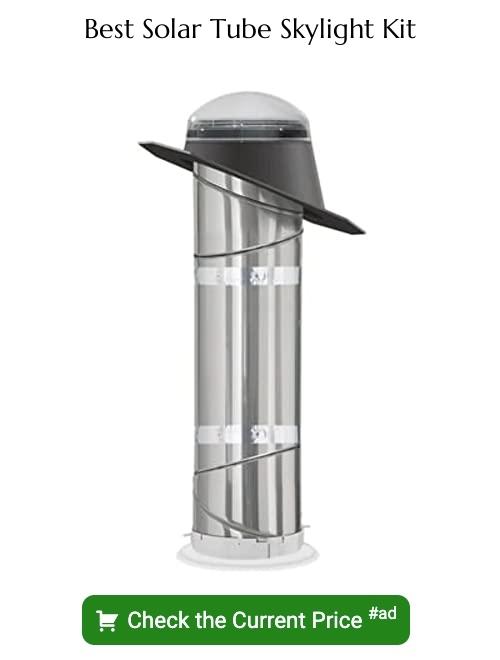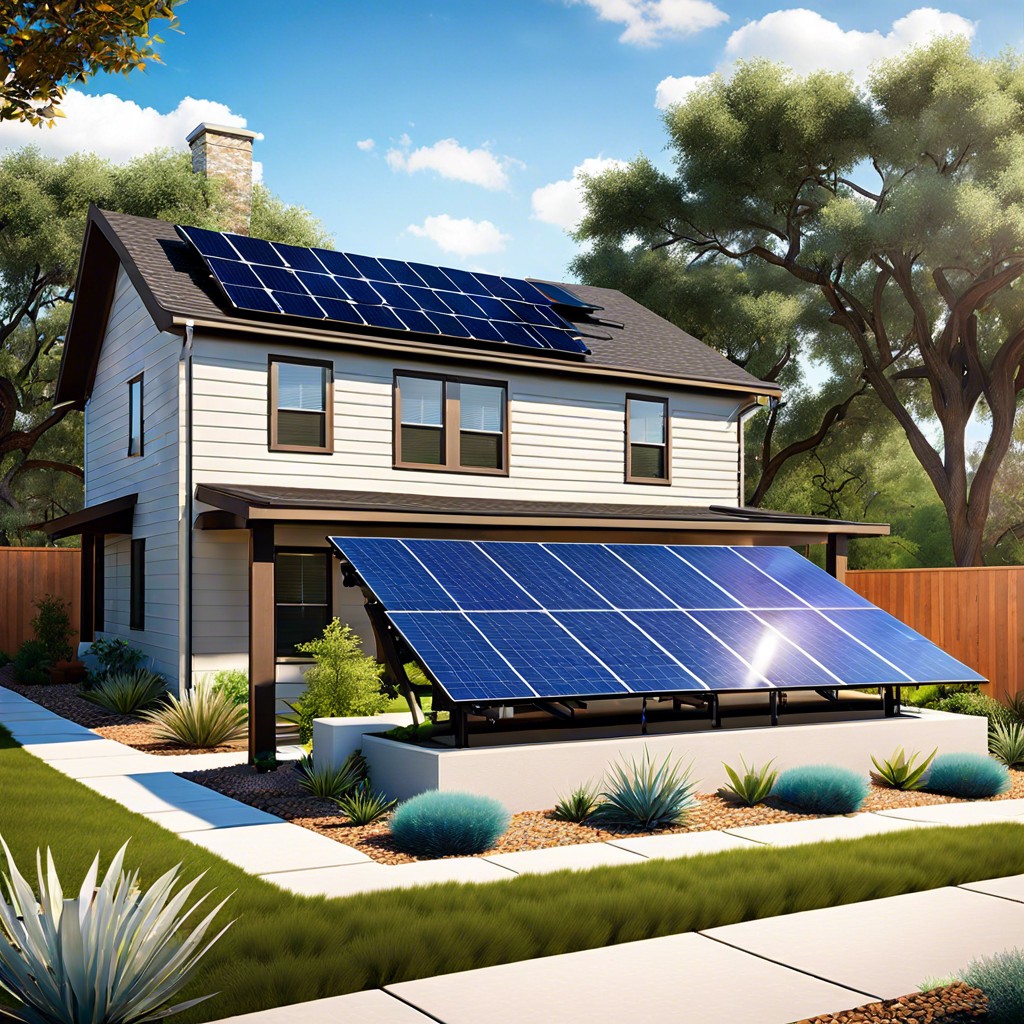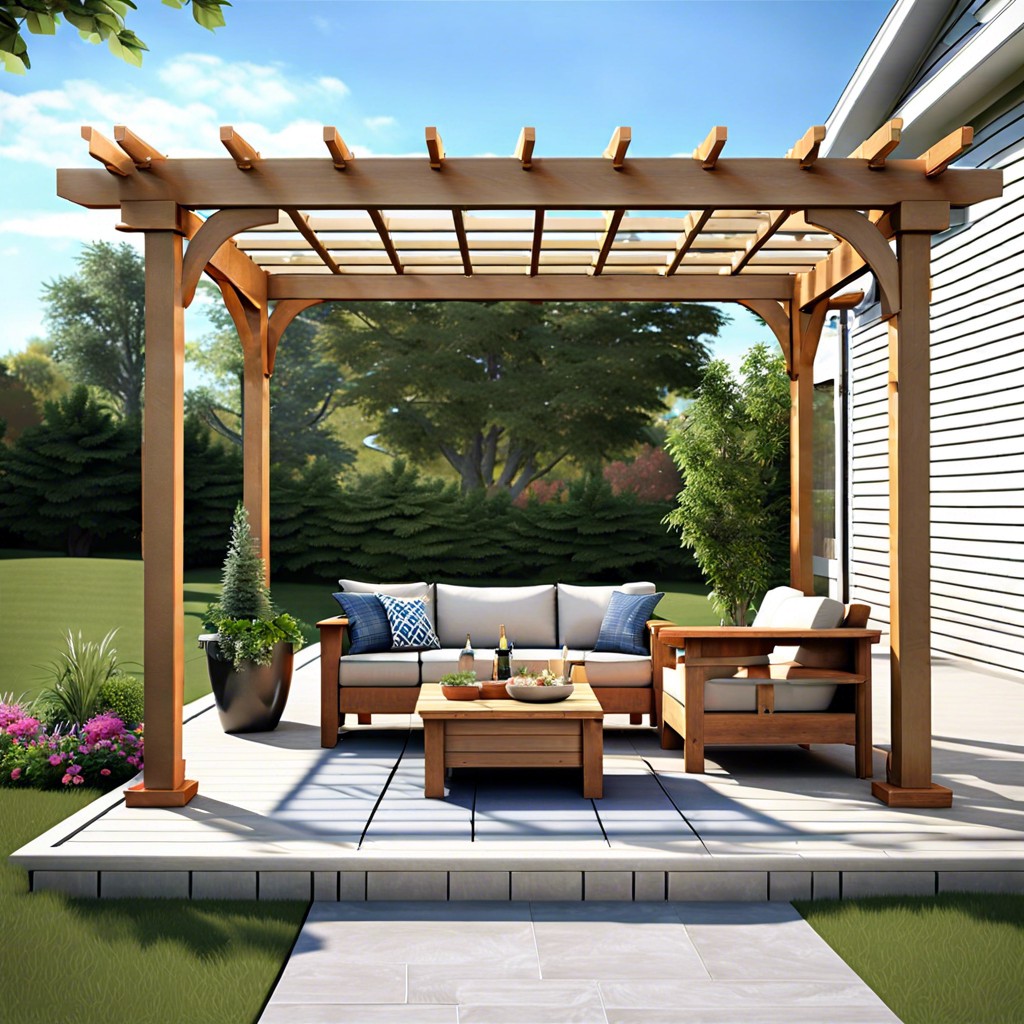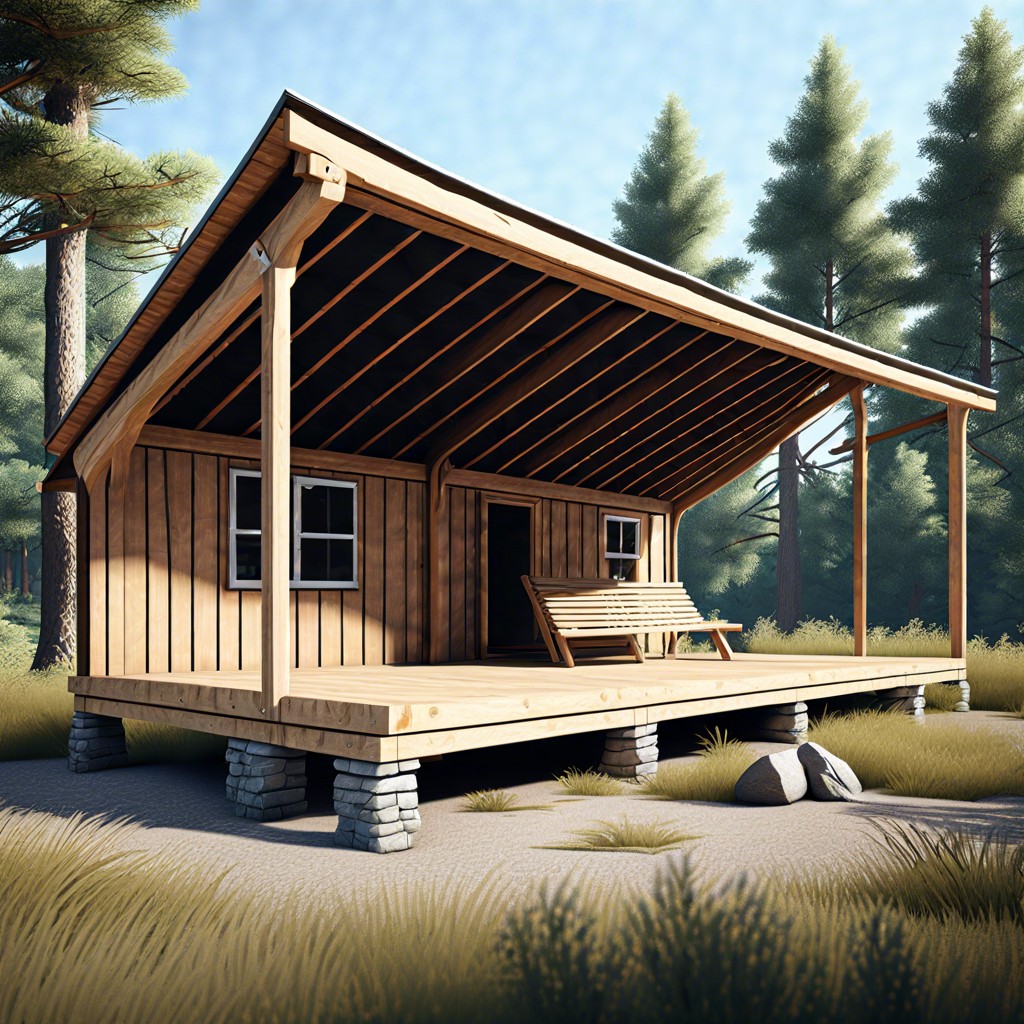Last updated on
Consider sun tunnels, a brilliant skylight alternative, because they offer abundant natural light with less structural modification to your roof.
Key takeaways:
- Sun tunnels capture natural light through a rooftop dome.
- They work well in small spaces where traditional skylights do not fit.
- Sun tunnels are less expensive and require less structural modification than skylights.
- Sun tunnels provide indirect light, while skylights offer a view of the sky.
- Sun tunnels are energy-efficient and come in various designs.
Solar Tubular Lights
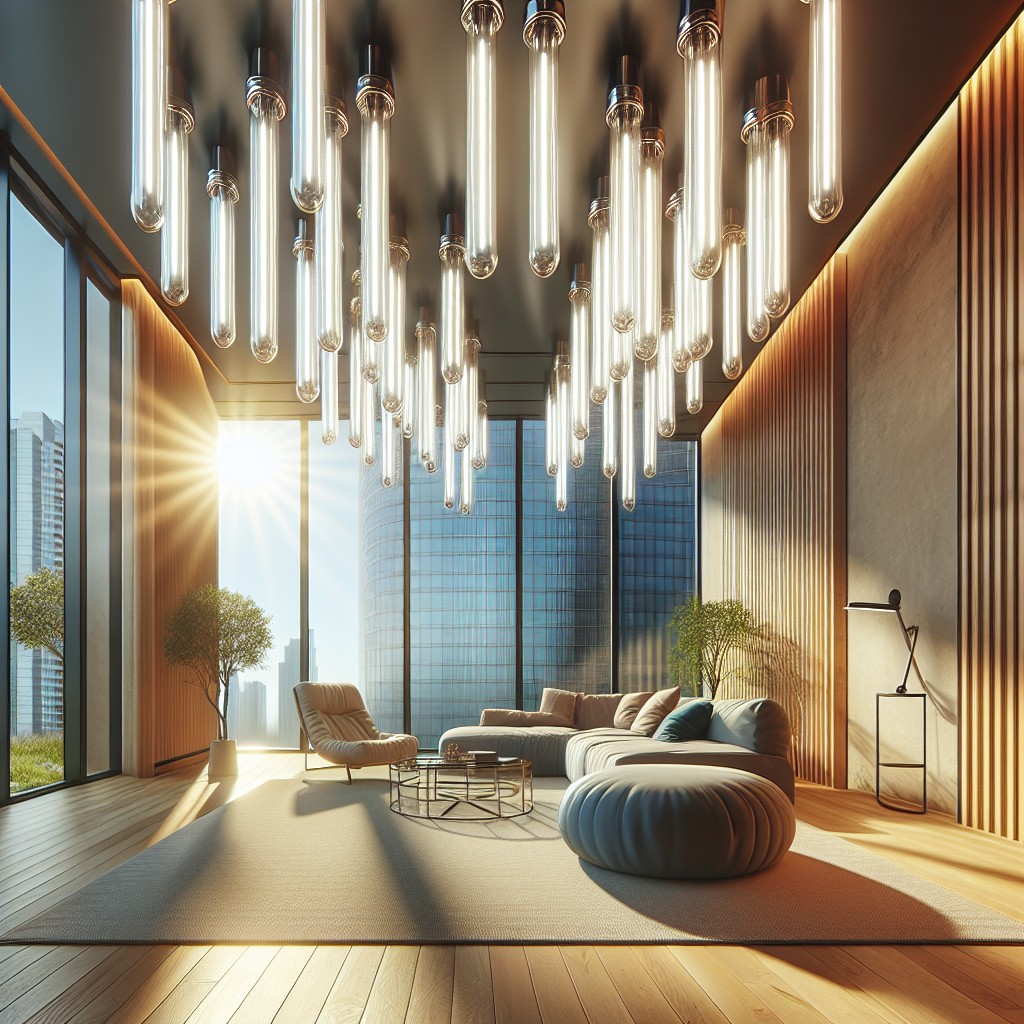
Harnessing the sun’s rays, solar tubular lights brighten interior spaces using reflective tubing. Here are key points to understand the concept:
- They capture natural light through a rooftop dome.
- Reflective material within a tube guides light inside.
- The tube ends in a diffuser in the ceiling, evenly distributing light.
- Installation is possible even in rooms without direct roof access.
- These lights work well in small spaces where traditional skylights do not fit.
- They offer a cost-effective way to introduce daylight into dark areas of a home.
What Is a Sun Tunnel?
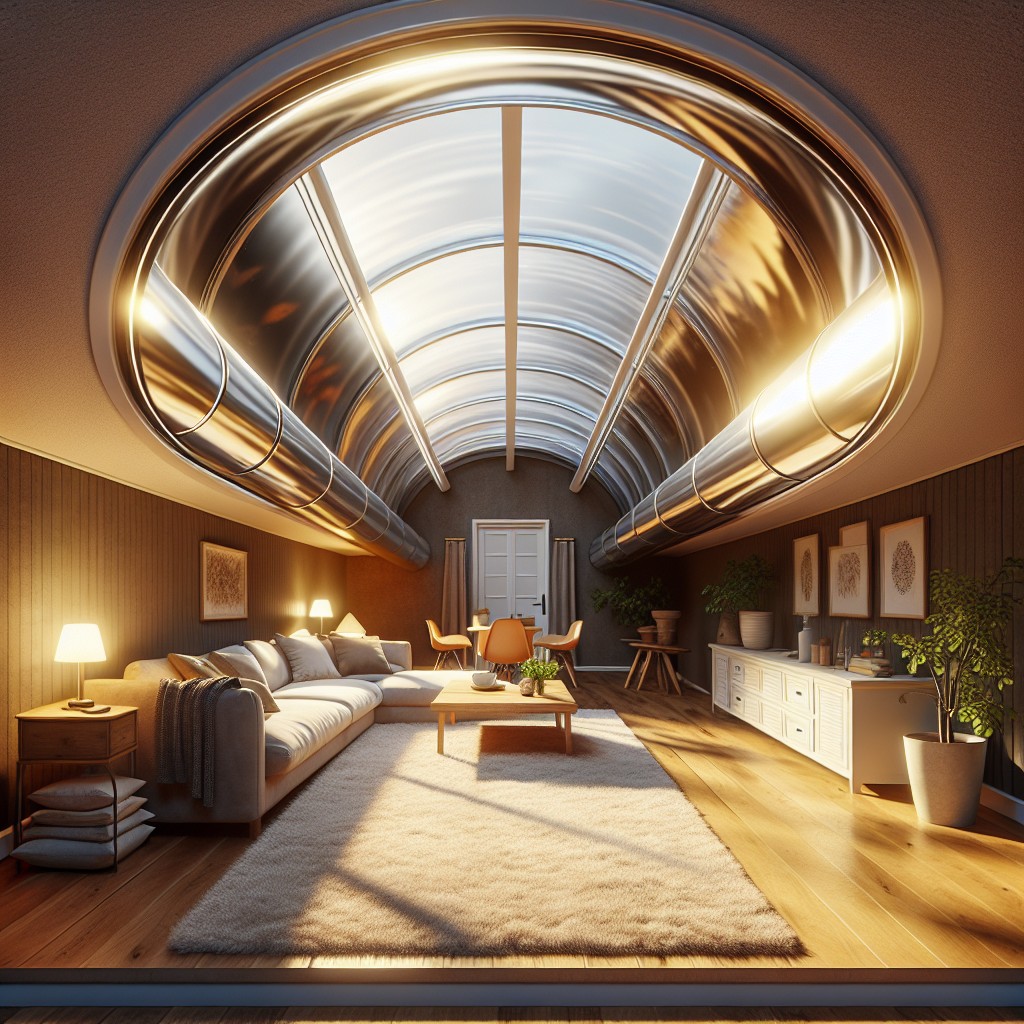
A sun tunnel, also known as a solar tube, light tube, or tubular skylight, is a type of daylighting system designed to provide natural light to spaces that may not have direct roof access or where traditional skylights are not practical.
This cylindrical structure captures sunlight through a dome on the roof and channels it down through a reflective tube, dispersing a soft glow into the interior space.
It’s particularly beneficial for illuminating internal rooms or areas that lack windows.
Installation typically involves much less structural modification than a traditional skylight, making it a more accessible option for many homeowners.
Its compact size also makes it versatile for smaller spaces that could benefit from natural light without the bulkiness of a full skylight.
Sun Tunnel Vs. Skylight
Understanding the difference between sun tunnels and skylights is essential when considering natural lighting options for your home.
Sun tunnels, also known as light tubes, are cylindrical passages that channel natural light from the roof surface to an interior space. They are compact and can be installed in areas with limited ceiling space where traditional skylights would not be feasible.
Skylights, on the other hand, are windows installed in the roofline that offer direct views of the sky and provide natural light over a larger area.
Sun tunnels are typically less expensive than skylights because they require less structural alteration to the roof and the interior of the home. Additionally, the installation process for a sun tunnel is generally quicker and less invasive.
Another notable distinction lies in the energy efficiency; sun tunnels often have less heat gain and loss due to their smaller size and indirect light channeling, potentially saving on heating and cooling costs.
Conversely, skylights provide the full spectrum of sunlight and can be opened to allow for ventilation, which is not an option with sun tunnels. They can also enhance the aesthetics of a room by offering a view of the sky, creating a more open and airy atmosphere.
When choosing between the two, consider factors such as the desired visual impact, the amount and type of light required, budget constraints, and the specific logistics of the space where the installation will occur.
How Does a Sun Tunnel Work?
Harnessing natural light without the complexities of traditional skylights, sun tunnels channel sunlight through a reflective tube from the roof to the interior space. Initially, a dome on the roof captures sunlight and directs it into the tube. The interior lining of the tube, typically made of polished metal, serves as a continuous mirror, ensuring that light bounces efficiently through the length of the tunnel.
Finally, at the ceiling level, a diffuser disperses the light evenly into the room, mimicking the way a traditional light fixture illuminates a space. This design minimizes the loss of light intensity, providing a bright and natural light source even when the sun is not directly overhead.
Components of a Sun Tunnel
Sun tunnels consist of several essential components that work together to channel natural light into interior spaces:
1. Dome: Mounted on the roof, this clear dome captures sunlight. Typically made from high-impact polycarbonate or acrylic, it is designed to withstand harsh weather conditions.
2. Reflective Tube: Connecting the dome to the diffuser, this tube is lined with a highly reflective coating to channel light through the tunnel with minimal light loss. Tubes can be rigid or flexible, with the former providing the brightest light.
3. Diffuser: Positioned on the ceiling of the room to be lit, the diffuser evenly spreads the captured sunlight, reducing glare and providing a soft glow.
4. Flashing: This component ensures a watertight seal where the sun tunnel penetrates the roof, and is crucial for preventing leaks. Flashing kits vary to suit different roof types, whether they’re shingled, metal, or tiled.
Understanding each component’s role helps appreciate how sun tunnels efficiently illuminate interior spaces without the complexity and size of traditional skylights.
What Kinds of Sun Tunnel Options Are Available?
Sun tunnels come in various designs to cater to different roofing materials and slopes. The most common types include rigid tunnels, which offer a direct path for light and are ideal for short distances between the roof and the ceiling. Their counterparts, flexible tunnels, can navigate around obstacles in the roof space, making them suitable for more complex roofing structures or longer distances.
Diameter size is another variable, typically ranging from 10 to 22 inches. A larger diameter tube will bring in more light, perfect for spacious areas, while a smaller tube is sufficient for illuminating closets or bathrooms.
The dome material on the roof can vary as well. Some models feature acrylic or polycarbonate domes designed to withstand harsh weather, while others use glass, which may offer superior light transmittance and durability.
Consumers also have the option to choose from various diffuser styles for the ceiling end of the tunnel. Diffusers disperse sunlight entering the room, coming in different patterns and levels of opacity to match the aesthetic and lighting needs of the space.
Lastly, additional features like integrated LED lights allow for a combination of natural and artificial light, which is practical for use during the night or on overcast days. Some sun tunnels also come with ventilation kits, serving dual purposes of illumination and air circulation in rooms like bathrooms or kitchens.
How Much Does a Sun Tunnel Cost?
The installation cost of a sun tunnel can vary widely based on several factors, including the model, size, and complexity of the installation. On average, pricing ranges from $500 to over $1,000, including labor. The type of roof and ceiling in your home – whether it’s shingle, tile, or flat, and whether you have a vaulted ceiling or attic space – can also affect the total cost.
Longer tunnels, which are needed for multi-story homes, add to the price due to the additional materials and labor required. Don’t forget that certain brands and models come with enhanced features, such as integrated LED lights for nighttime use, which might tip the higher end of your budget. Keep in mind that while the initial investment may be significant, the potential energy savings could offset the costs over time.
How Long Do Sun Tunnels Last?
Sun tunnels are designed for durability and can last for about 20 years on average, though some high-quality models extend beyond this with proper maintenance. The lifespan of a sun tunnel largely depends on the materials used and the local climate conditions. The dome, typically made from polycarbonate or acrylic, is UV-resistant and can withstand harsh weather, but may become cloudy over time which reduces light transmission.
To ensure longevity, it’s imperative to correctly install and regularly inspect the tunnel and its components. The flashing, which helps prevent leaks, should be checked periodically, especially after severe weather events. The interior reflective tube may require cleaning to maintain optimal light reflection.
Moreover, warranties offered by manufacturers often cover certain elements of sun tunnels for extended periods, further ensuring their lifespan. It’s recommended to choose models with comprehensive warranties that match your expectations for the product’s durability. Regular maintenance and prompt repairs to any damage can prevent premature deterioration, assuring the sun tunnel’s benefits for years to come.
Energy Efficiency of Skylight Alternatives
Sun tunnels and other skylight alternatives enhance indoor lighting without compromising energy efficiency. These alternatives are designed to minimize heat transfer, thereby maintaining a stable indoor temperature and reducing the reliance on heating and cooling systems.
- Insulation: Tubular lights often come with double or triple-layered, sealed glazing to provide superior insulation compared to traditional skylights.
- Reflective Tubes: The interior reflective coating maximizes light transfer while minimizing heat gain, ensuring that daylighting does not lead to excess heat.
- UV Resistance: Many models filter out harmful UV rays, preventing furniture fading and additional heat.
- Energy Star Ratings: Look for Energy Star-rated products which meet strict energy efficiency guidelines set by the EPA and the Department of Energy.
- Daylight Dimmer: Some sun tunnels include a daylight dimmer to control light input, further enhancing their energy-saving potential.
What to Do When Skylights Aren’t an Option
If installing a traditional skylight is impractical due to structural constraints or budget considerations, consider exploring alternative methods to enhance natural light in your space:
1. Solar Tubes: Opt for solar tubular lights, a cost-effective and less invasive option, which funnel sunlight through a reflective tube.
2. Light Shelves: Install light shelves, which are horizontal surfaces that reflect daylight deep into a room, effectively brightening the area without major renovations.
3. Reflective Paint: Apply a light-colored, reflective paint to your ceilings and walls to maximize the ambient light in the room.
4. Strategic Mirrors: Position mirrors to catch and disperse light throughout your interior, which can mimic the effect of direct sunlight.
5. Window Enhancements: Upgrade existing windows with high-transparency glass or add more windows to increase the entry point for sunlight.
6. Light-Enhancing Window Treatments: Utilize sheer drapes or adjustable blinds to control light levels without blocking it entirely.
By adopting these suggestions, you can illuminate your interiors without needing to install a conventional skylight.
FAQ
What can I use instead of skylight?
An excellent alternative to a skylight can be Solar Whiz Lights, a solar-powered lighting system that is easy to install.
What is the alternative to skylight replacement?
An alternative to skylight replacement is the installation of sun tunnels, which offer benefits such as easier setup and improved lighting, especially in smaller spaces.
What is the alternative material for skylights?
The most common alternative material for skylights is acrylic sheeting, also known as plexiglass, due to its superior resistance to discoloration, impact, and chemicals.
Which is better sun tunnel or skylight?
Considering the amount of light each structure can deliver, a skylight is better than a sun tunnel as it provides more natural light to your home.
What are the merits and demerits of sun tunnels compared to skylights?
Sun tunnels are more energy-efficient, easier to install, and less invasive than skylights, but they do not offer the same open sky view or aesthetic appeal.
How does a roof window differ from a traditional skylight?
A roof window differs from a traditional skylight in that it is often larger, can be opened for ventilation, and is usually installed in places within direct reach, unlike skylights which are typically fixed and located in harder-to-reach areas.
Can solar tubes be considered a viable alternative to skylights in terms of light penetration?
Yes, solar tubes can be considered a viable alternative to skylights in terms of light penetration.
